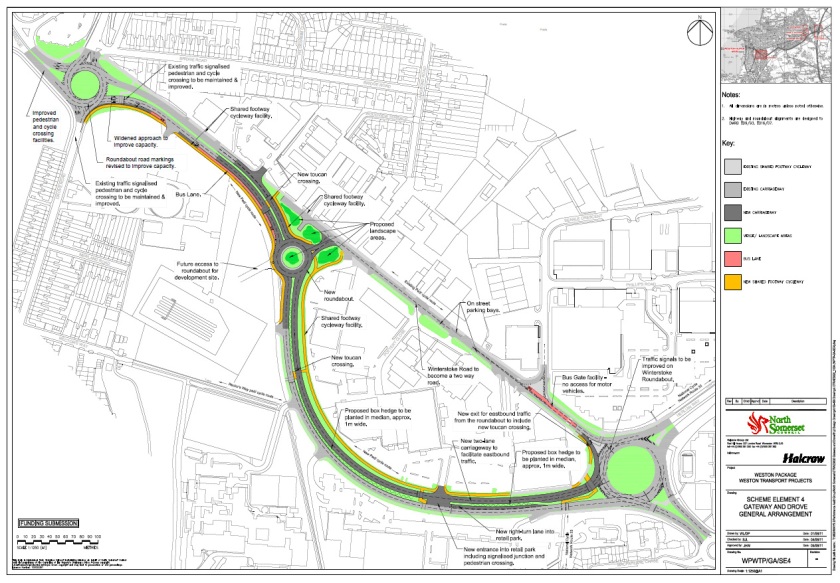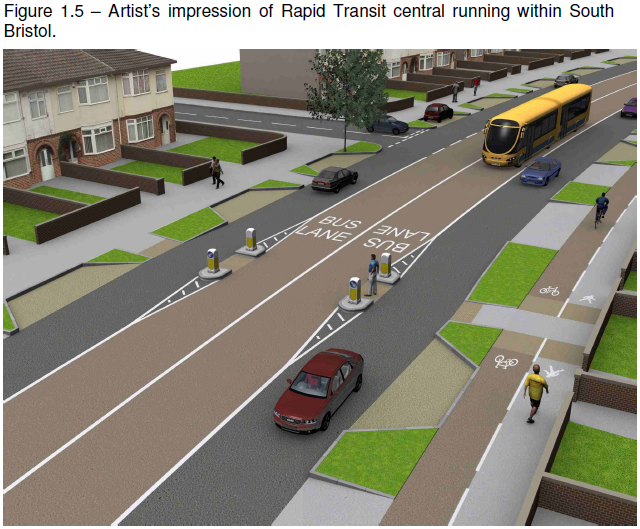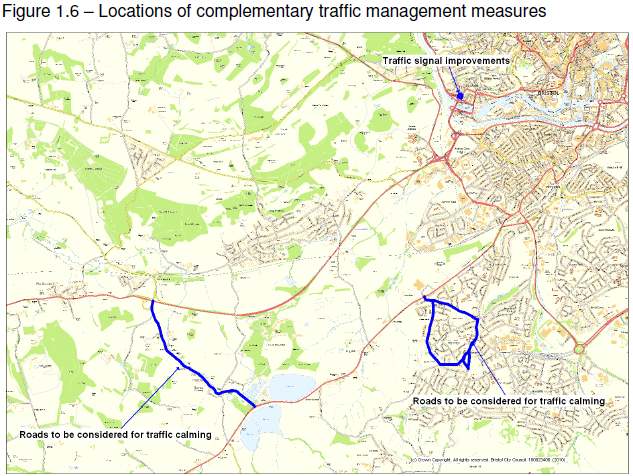
Finally, the Saturday evening Infrastructure Safari at the Cycling Embassy’s AGM in Bristol in May. This was led by Steve Melia, a transport and town planning academic at the University of the West of England and campaigner from the Carfree UK and Living Heart for Bristol campaigns. That latter campaign formed the theme for the safari, a short ride around the city centre looking at the big roads that blight it and the ways in which traffic reduction has already helped to make a more thriving liveable city, and the potential for further reduction.
The basic idea of the Living Heart campaign is to cut traffic and create a liveable city centre through the careful use of selective permeability to make it impossible to drive through the city centre, without preventing anybody who has a genuine need to be there with a vehicle — residents, traders, and deliveries — from driving in and out. In a sense, they are seeking to make the best of the Bristol that the motorway mad 1960s planners left us, with its arterial motorway and inner ring road, by switching from a system which used the big roads to feed ever greater volumes of traffic into the old city streets to one which uses those main roads to remove traffic from those streets. Or, to put it another way, they would block up the ratruns, freeing them up for more suitable and useful purposes.

Compared to much of the country (and I know, that’s hardly a ringing endorsement), Bristol already has a relatively good record on creating a liveable low-traffic city centre. It started in the 1980s with strategic road blocks and short sections of pedestrianisation to close ratruns in the Old Town, at King Street and Corn Street and the like, and continued in the Broadmead shopping area with (poorly enforced) bus-only streets coupled to one-way systems which enable access while making unattractive ratruns. More dramatically and famously, Bristol has succeeded in rolling back some of the mistakes of the motorway mad past: the inner “ring” road dual carriageway isn’t a ring any more. Where for decades it crossed diagonally through the fine Georgian Queen Square, blighting the area so that all around was neglected and run down, it was closed amid much protestation in the mid-1990s, and the square restored in stages through the 2000s, giving the city a much loved little park and thriving commercial zone. Similarly College Green outside the cathedral has lost a main road.
But the city centre still suffers from motorists trying to find a shortcut through the old streets, at times making them unpleasant places to be and to do business, and trapping pedestrians, cyclists and public transport users in the mess they create, not just fellow motorists. The campaign are not greatly attached to any one specific means of keeping this through traffic out of these unsuitable streets — there are lots of potential places where a block or a bus gate would be appropriate and have the desired effect. But they particularly point to the four bridges that cross the harbour within their ring road cordon as obvious places to consider.
And they have a good local example to cite. Unfortunately we were too busy looking at railway paths to look at the city centre while in Bath. At first sight Bath, with a perpetually jammed trunk road almost through the heart, would seem an unlikely choice for a lesson on liveable low-traffic city centres, but it would have been worth looking at for the ways in which many of the old city centre streets have been reclaimed from traffic while maintaining essential access: through road blocks with pedestrian and cycle permeability, a one-way system around the historic and commercial centre which enables access for delivery vans and then sends them back to the same main road they came in on, and, of interest to Living Heart, Pulteney Bridge bus gate. Together these things create some pleasant public spaces, some streets fit for cycling, and some bus routes not completely blocked by jams of ratrunning motorists.
Ultimately the Living Heart campaign, and Steve’s safari, is about segregation: separating traffic away from people. It’s what all of the diverse safaris in the Westcountry were ultimately about. Which will be explored properly in a post to conclude this whole thing. If and when I get around to writing it…








